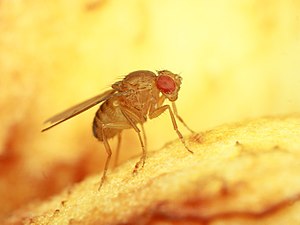| dbo:abstract
|
- Mate-choice copying, or non-independent mate choice, occurs when a female of an animal species copies another fellow female's mate choice. In other words, non-independent mate-choice is when a female's sexual preferences get socially inclined toward those of their fellow females. This behavior is speculated to be one of the driving forces of sexual selection and the evolution of male traits. It is also hypothesized that mate-choice copying can induce speciation due to the selective pressure for certain, preferred male qualities. Moreover, mate-choice copying is one form of social learning in which animals behave differently depending on what they observe in their surrounding environment. In other words, the animals tend to process the social stimuli they receive by observing the behavior of their conspecifics and execute a similar behavior to what they observed. Mate choice copying has been found in a wide variety of different species, including (but not limited to): invertebrates, like the common fruit fly (Drosophila melanogaster); fish, such as guppies (Poecilia reticulata) and ocellated wrasse; birds, like the black grouse; and mammals, such as the Norway rat (Rattus norvegicus) and humans. Most studies have focused on females, but male mate copying has been also found in sailfin mollies (Poecilia latipinna) and humans. (en)
|
| dbo:thumbnail
| |
| dbo:wikiPageExternalLink
| |
| dbo:wikiPageID
| |
| dbo:wikiPageLength
|
- 20681 (xsd:nonNegativeInteger)
|
| dbo:wikiPageRevisionID
| |
| dbo:wikiPageWikiLink
| |
| dbp:wikiPageUsesTemplate
| |
| dct:subject
| |
| rdfs:comment
|
- Mate-choice copying, or non-independent mate choice, occurs when a female of an animal species copies another fellow female's mate choice. In other words, non-independent mate-choice is when a female's sexual preferences get socially inclined toward those of their fellow females. This behavior is speculated to be one of the driving forces of sexual selection and the evolution of male traits. It is also hypothesized that mate-choice copying can induce speciation due to the selective pressure for certain, preferred male qualities. Moreover, mate-choice copying is one form of social learning in which animals behave differently depending on what they observe in their surrounding environment. In other words, the animals tend to process the social stimuli they receive by observing the behavior o (en)
|
| rdfs:label
| |
| owl:sameAs
| |
| prov:wasDerivedFrom
| |
| foaf:depiction
| |
| foaf:isPrimaryTopicOf
| |
| is dbo:wikiPageWikiLink
of | |
| is foaf:primaryTopic
of | |




